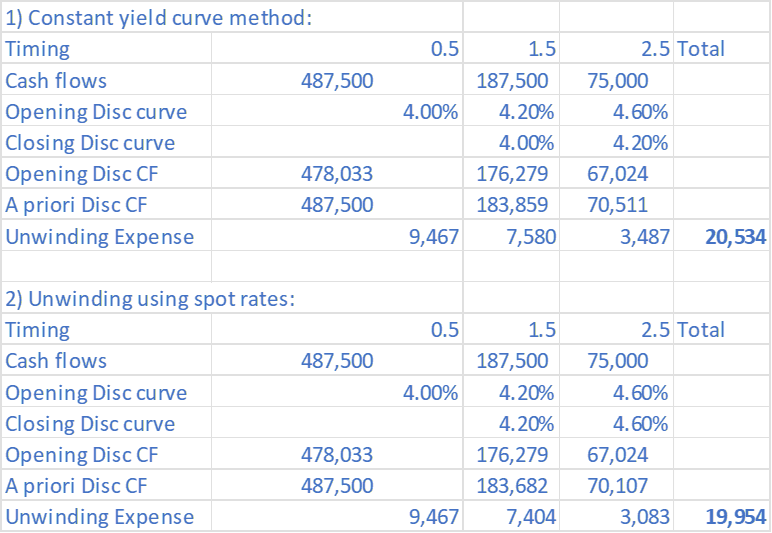Q13 part b.

Based on solution for constant yield curve method, when we discount CF 187,500, why do we discount to Dec 31, 2023 using 4.2% and we discount to Dec 31, 2024 using 4%? It is constant yield curve method, but it does not use the same discount curve. Please help me with this. I feel like this is for Spot rates method.
Comments
Constant yield curve means that you are using the same yield curve at all periods. In this example:
This is what it means to use the same yield curve.
Stated another way, using the same yield curve means that:
And so on and so forth. You would also apply the same logic for payments occuring two years later, three years later from time 0,1,2 etc.
For the spot rate method, you don't do any shifting of the yield curve when you go from one period to the next. In other words, the discount rate at time x, x+1, x+2 is always fixed (in this example, the discount rate of time 2.5 is always 4.6%) regardless of if we are discounting to time 0 or 1.
You can notice that in the constant yield curve method, the same discount rate is always used for claims that are paid one year later at a given point in time. For the spot rate method, the same discount rate is always used for claims payments expected in a given year, regardless of the point in which you are discounting back to.